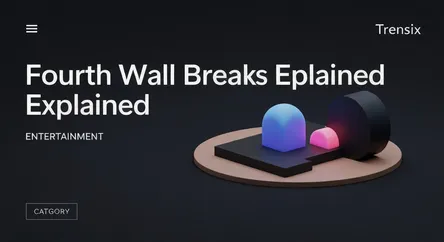Entertainment
Fourth Wall Breaks Explained

Ever had a movie character talk directly to you? Explore the film technique of breaking the fourth wall and why it's so popular in modern cinema.
What is it?
The "fourth wall" is the imaginary screen or barrier separating the audience from the events of a film. A "fourth wall break" occurs when a character or element within the story acknowledges this barrier and, by extension, the audience. This can be done through direct address, a knowing glance to the camera, or commentary on the fact that they are in a movie. Classic examples include Ferris Bueller explaining his life directly to viewers in Ferris Bueller's Day Off or Deadpool's constant meta-commentary about being a superhero in a comic book film.
Why is it trending?
This technique has surged in popularity as a tool for post-modern and self-aware storytelling. In an era saturated with media, audiences appreciate content that winks at established tropes. It's an effective device for comedy, creating an inside joke between the character and the viewer. Films like Deadpool and TV shows like Fleabag have used it to great acclaim, proving its commercial and critical appeal. This success encourages more creators to experiment with the device, making it a prominent feature in contemporary film and television.
How does it affect people?
Breaking the fourth wall fundamentally changes the viewing experience. It shatters the illusion of reality, pulling the audience out of passive observation and making them an active participant or confidant in the narrative. This can create a unique sense of intimacy and connection with a character. While it can be jarring if used poorly, an effective fourth wall break can heighten comedic impact, add a layer of clever commentary, or even increase emotional weight by making the audience feel directly involved in the character's journey. It's a powerful tool that redefines the relationship between the story and its audience.